We used to live on one of the oldest streets in the dead-center of Toulouse, a city in southwest France. In case you were unaware, the coffee in France generally sucks. Seriously, it’s not very good. But, in Toulouse, we were fortunate to have the city’s best espresso just a 5-minute walk from our front door. (If you’re ever there, go to Square Charles-de-Gaulle. You’ll find an espresso machine on a bike. Ask for “Figgy”—tell him I sent you.)
One morning I was in desperate need for coffee that didn’t suck. And, as it looked quite nice outside, I figured I’d grab a camera and take some shots on my way to see Figgy. The intention was to make some more photos for my “Forgotten” series—my splitter, double-exposure, in-desperate-need-of-a-shorter-description, street photo series.
So, I grabbed one of my 35mm cameras. It was an SLR that has a built-in double exposure mechanism. It also happens to be a very highly regarded model in the world of 35mm film cameras. Its center-weighted metering and exposure compensation make it good for splitter photography. But, a lot of my SLR’s are good for splitter photography. So, let’s be honest, it already had film in it, making it preferable. When using splitters, you control the fade between the two exposures using aperture (think DoF and CoC). Wide-angle lenses often give too little fade, and telephotos give too much; so, I grabbed one with a “normal” focal length for maximum control.
When I got to the coffee bike, I was immediately asked if I wanted a double-shot; because Figgy gets me. He really does. Then, while enjoying my coffee, he introduced me to Mathilde—at least, that’s what we’ll call her as I don’t remember her actual name. As it turns out Mathilde is also a photographer who likes Figgy’s coffee. As it also turns out, Mathilde’s camera brand of choice matched the brand I happened to grab that day.
I should mention that I’m brand agnostic, and that in 35mm I’ve used, owned, and been happy with most major brands. Hell, I’m digital-film agnostic. While I choose to work with film, what matters to me is the final image. Derrida be praised.
At any rate, Mathilde approved of my camera body, for what it’s worth; as if the same engineers who made her full-frame digital were the same ones who designed my 70’s reflex. I thought I had escaped the camera-gear-brand debate. I was going to ask her what kind of photos she made; but, apparently, she hadn’t completely signed-off on my kit.
“Wait, what lens do you have on there?” (Splitters in Cokin filter holders don’t make it easy to eye one’s optic’s specs.)
“Oh it’s a [normal focal length lens, with a modest aperture].”
She, then, sipped her coffee and let slip a tiny noise of photographic Bourgeoisie. It was clear that she did not approve and that my work was clearly no threat to her photographic oeuvre.
“I take it you typically shoot with faster lenses?”
“Yes, I only use fast glass. But, I do this professionally.”
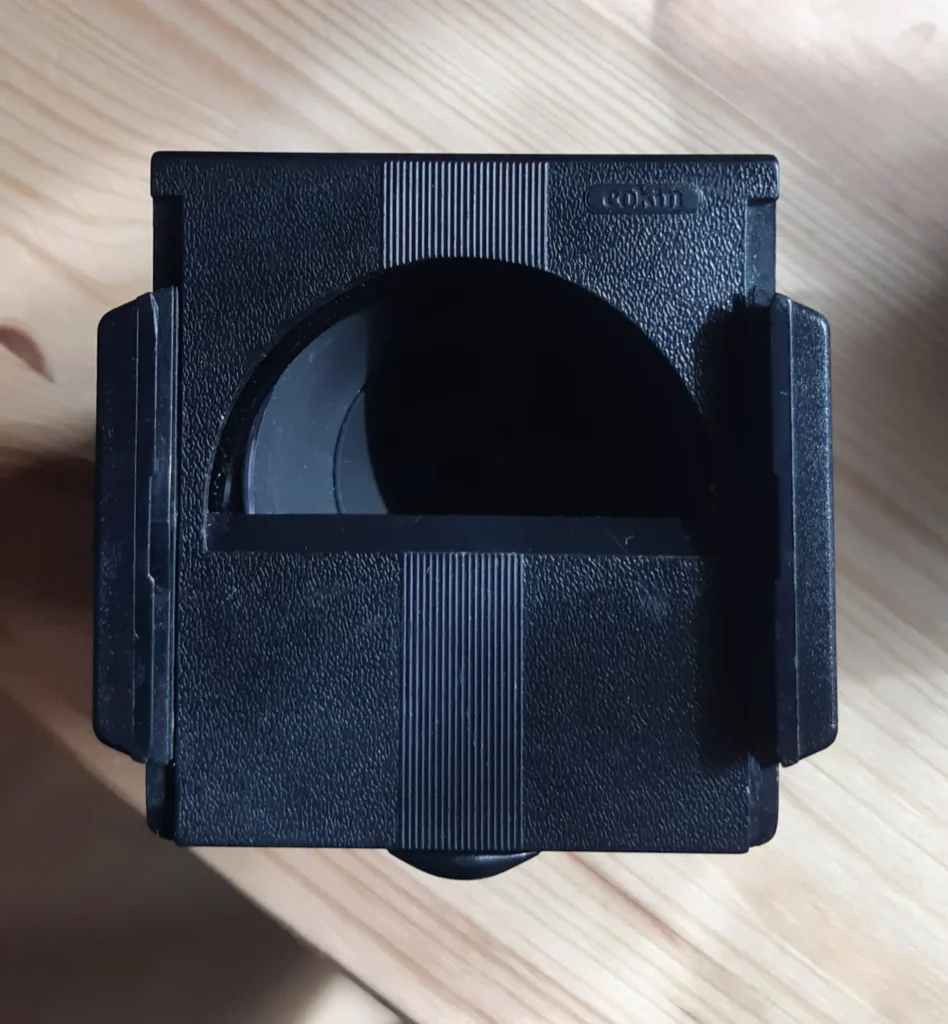
As mentioned, with splitter work, one controls the fade between the two exposures using aperture. For my street photos with a normal focal length I don’t open wider than f/4, else there’s too much blur between the two sides. Opening wider than f/2 results in images almost identical to using no splitter at all. Typically, I shoot this series at f/5.6. The lens I had chosen to shoot with that day opens (slightly) more than f/4, making it fine for the photos I was making. One of these photos may have been taken on that walk, I don’t remember. I can tell you that different brand-model-lens combinations are represented.
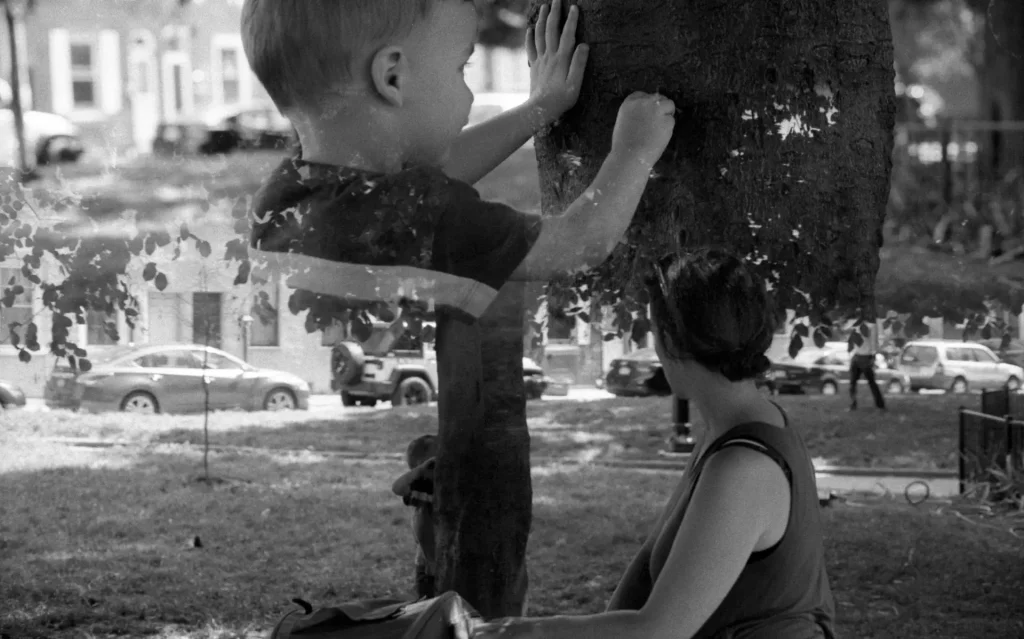
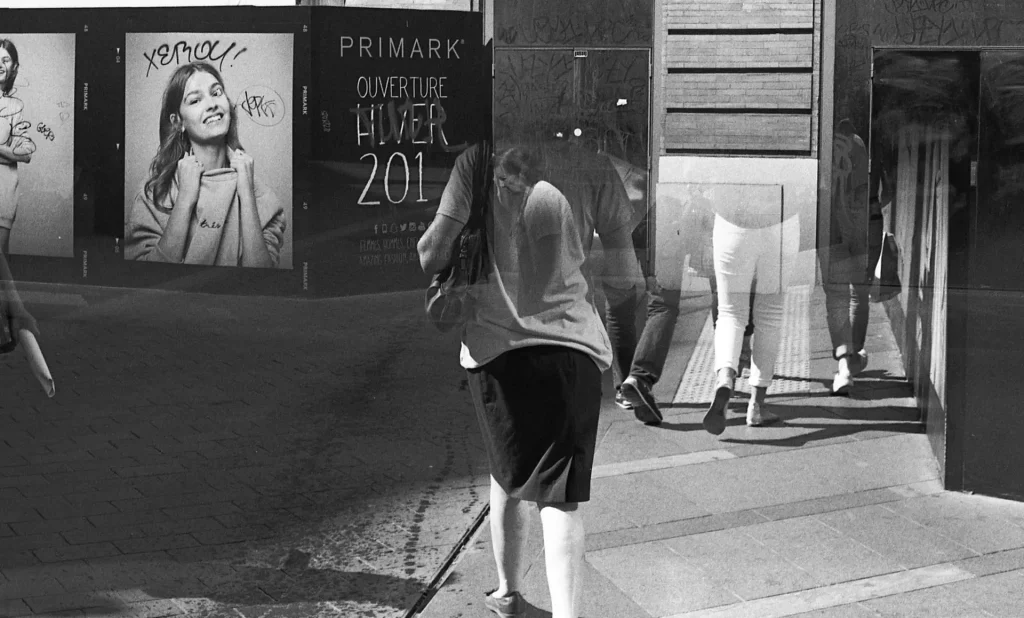
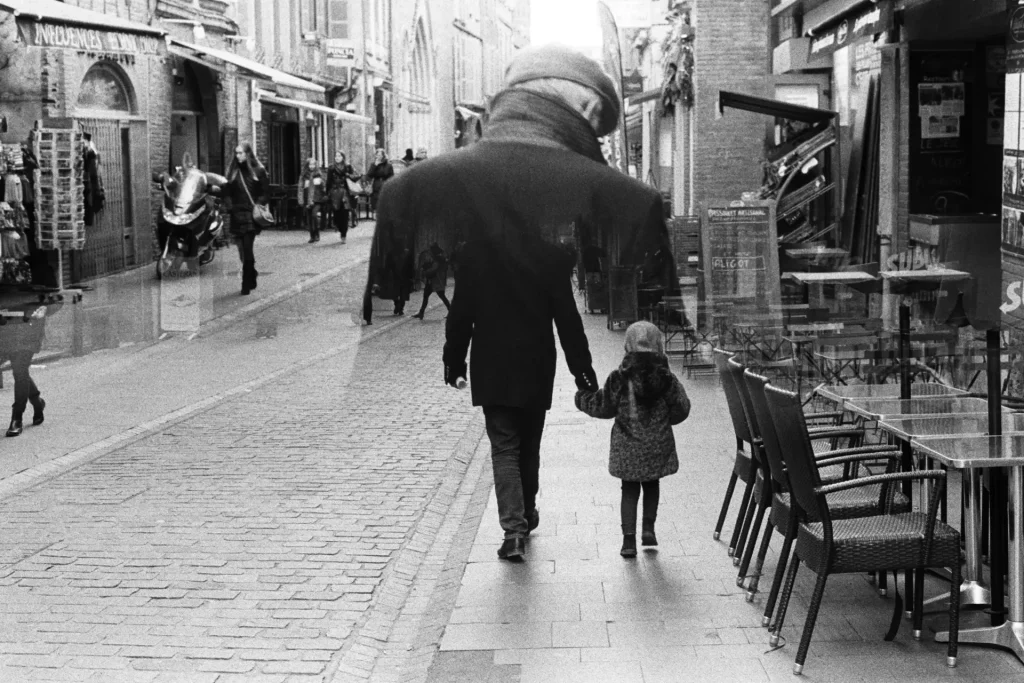
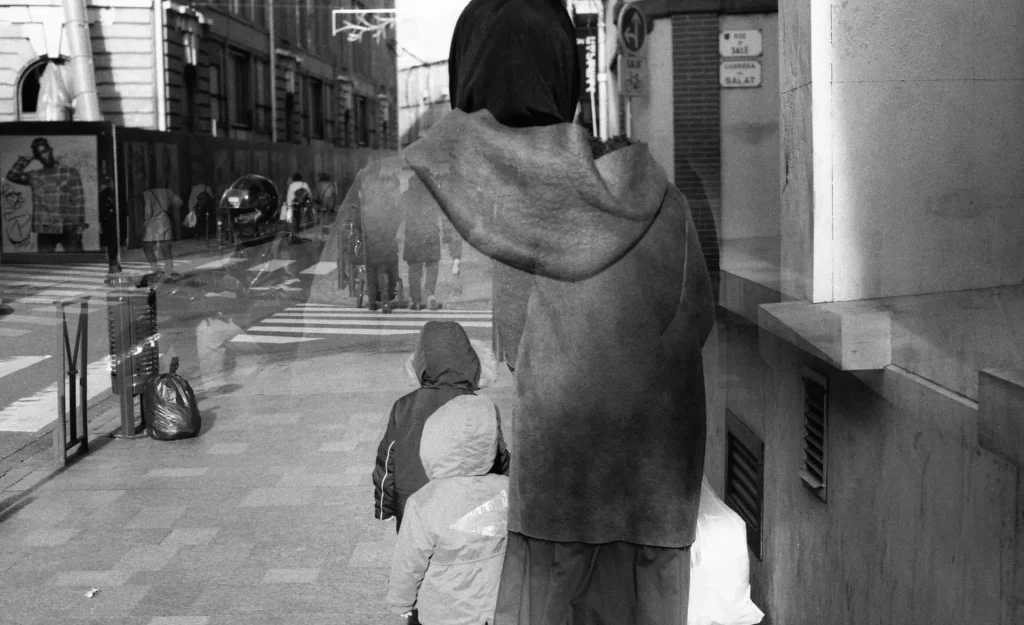
It’s insane that sometimes we talk about gear before first discussing the images we want to create. Gear should serve the image, but all too often we shoot photos to show off the gear. I love my cameras, and their quirks. But, in the end, capital “P” Photography is about the images. Whether they are made with a wide aperture, a small one, plastic optics, or a sonnar who’s elements were molded in the sun by Ra himself; we mustn’t lose focus on the image.
By the way, here’s a splitter photo created with a plastic camera with plastic optics. For this photo, I wouldn’t have it any other way. But, perhaps, that’s because I don’t do this professionally.
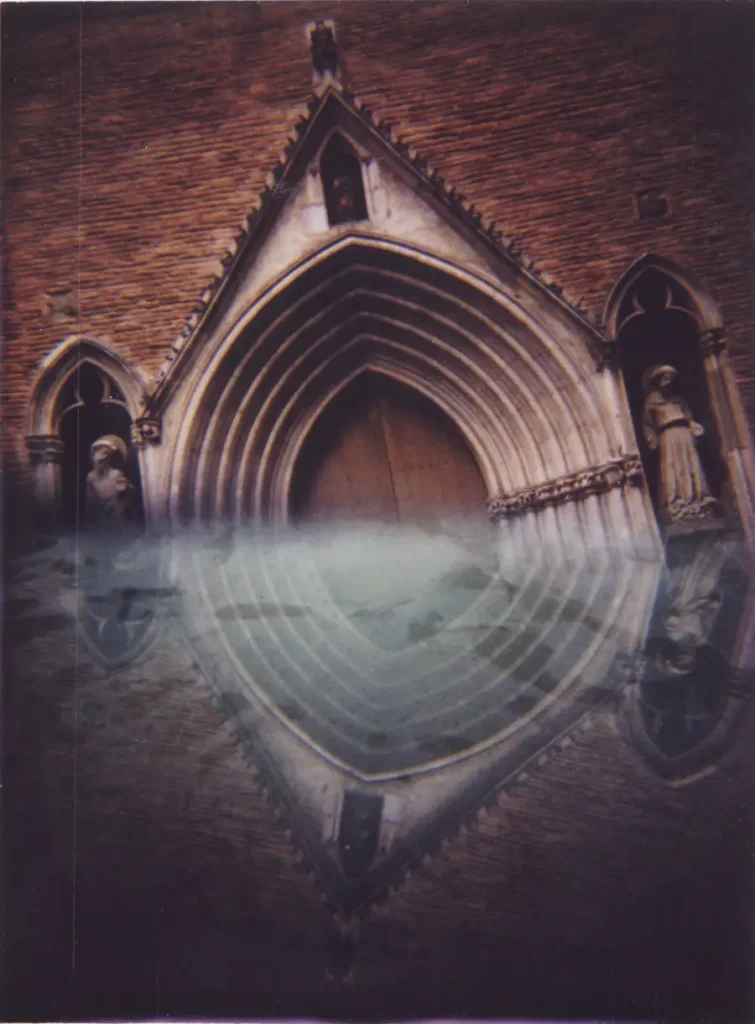
Share this post:
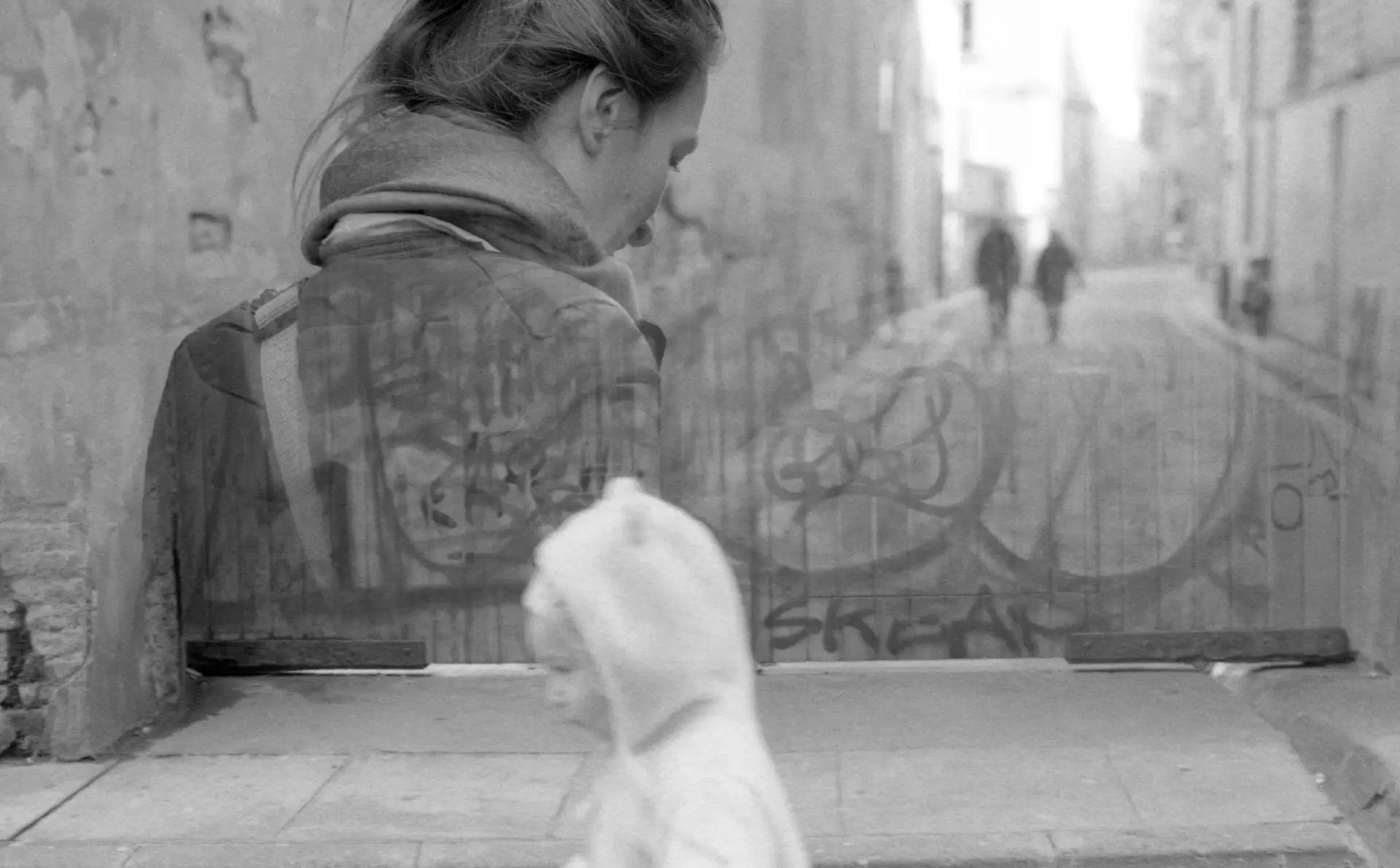








Comments
Tom Sheppard on The Kit Before the Horse – By David Allen
Comment posted: 19/05/2019
Thank you for your wit and insight.
Appreciated
Comment posted: 19/05/2019
Tobias Eriksson on The Kit Before the Horse – By David Allen
Comment posted: 19/05/2019
Comment posted: 19/05/2019
Aivaras on The Kit Before the Horse – By David Allen
Comment posted: 19/05/2019
Comment posted: 19/05/2019
Comment posted: 19/05/2019
Sien Hong on The Kit Before the Horse – By David Allen
Comment posted: 19/05/2019
Comment posted: 19/05/2019
BC on The Kit Before the Horse – By David Allen
Comment posted: 19/05/2019
Now for a brand-agnostic ("Hell, I’m digital-film agnostic. While I choose to work with film, what matters to me is the final image. Derrida be praised.'), there is a lot of space dedicated to a "highly-regarded model" equipped with a micro-nikkor (rough guess ;o) and a Cokin filter-holder. Metonimy be praised. By the way if Mathilde has a tint of "bourgeoisie", what do you call dropping Derrida in this conversation? Anyway really entertaining, thanks again.
Comment posted: 19/05/2019
Laurie on The Kit Before the Horse – By David Allen
Comment posted: 19/05/2019
Comment posted: 19/05/2019
jeremy north on The Kit Before the Horse – By David Allen
Comment posted: 20/05/2019
Not only a waste of money but also a waste of film.
Comment posted: 20/05/2019
Sean Laughlin on The Kit Before the Horse – By David Allen
Comment posted: 20/05/2019
Comment posted: 20/05/2019
Anna on The Kit Before the Horse – By David Allen
Comment posted: 26/05/2019
I love stumbling across gifted individuals in the wild. The intensity, curiosity and unique life trajectory always give them away. And for me it's comforting to see them in action. Oh there goes another one. Good for him!
Also, I'm dusting off my Diana splitter!
Comment posted: 26/05/2019